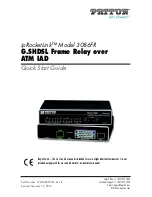
Overview of IBM Networking
IBM Network Media Translation
BC-218
Cisco IOS Bridging and IBM Networking Configuration Guide
78-11737-02
Figure 91
illustrates how SDLLC provides data link layer support for SNA communication.
Figure 91
SNA Data Link Layer Support
SDLLC Media Translation Features
The SDLLC feature allows a PU 4, PU 2.1, or PU 2 to communicate with a PU 2 SDLC device as follows:
•
SDLLC with direct connection—A 37x5 front-end processor (FEP) on a Token Ring and the 3x74
cluster controller connected to a serial line are each connected to an interface on the same router
configured with SDLLC.
•
SDLLC with RSRB—A 37x5 FEP on a Token Ring and a 3x74 cluster controller connected to a
serial line are connected to different routers. Only the device to which the 3x74 is connected is
configured with SDLLC. The routers communicate via RSRB using direct encapsulation, RSRB
over an FST connection, or RSRB over a TCP connection.
•
SDLLC with RSRB and local acknowledgment—A 37x5 FEP on a Token Ring and a 3x74 cluster
controller connected to a serial line are connected to different routers. Only the device to which the
3x74 is connected is configured with SDLLC. The routers communicate via RSRB over a TCP
connection that has local acknowledgment enabled.
In all these topologies, each IBM end node (the FEP and cluster controller) has no indication that its
counterpart is connected to a different medium running a different protocol. The 37x5 FEP responds as
if the 3x74 cluster controller were communicating over a Token Ring, whereas the 3x74 responds as
though the 37x5 FEP were communicating over a serial line. That is, the SDLLC software makes
translation between the two media transparent to the end nodes.
Virtual Token Ring Concept
Central to the Cisco SDLLC feature is the concept of a virtual Token Ring device residing on a virtual
Token Ring. Because the Token Ring device expects the node with which it is communicating also to be
on a Token Ring, each SDLLC device on a serial line must be assigned an SDLLC virtual Token Ring
address (SDLLC VTRA). Like real Token Ring addresses, SDLLC VTRAs must be unique across the
network.
In addition to the SDLLC VTRA, an SDLLC virtual ring number must be assigned to each SDLLC
device on a serial line. (The SDLLC virtual ring number differs from the virtual ring group numbers that
are used to configure RSRB and multiport bridging.)
SNA
SDLC
SDLLC
LLC
LNX
QLLC
X.25
S3028
Upper layers
Data link layer
















































